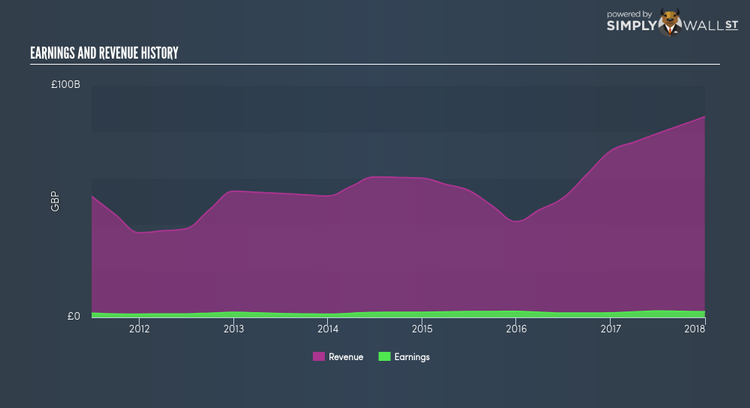With 24.36% Earnings Growth, Did Prudential plc (LON:PRU) Outperform The Industry?

Investors with a long-term horizong may find it valuable to assess Prudential plc’s (LSE:PRU) earnings trend over time and against its industry benchmark as opposed to simply looking at a sincle earnings announcement at one point in time. Below is my commentary, albiet very simple and high-level, on how Prudential is currently performing. Check out our latest analysis for Prudential
Could PRU beat the long-term trend and outperform its industry?
For the most up-to-date info, I use data from the most recent 12 months, which annualizes the most recent half-year data, or in some cases, the latest annual report is already the most recent financial year data. This method enables me to assess many different companies on a more comparable basis, using the latest information. For Prudential, its most recent bottom-line (trailing twelve month) is UK£2.39B, which, relative to the previous year’s level, has risen by 24.36%. Since these values may be fairly nearsighted, I have calculated an annualized five-year value for Prudential’s net income, which stands at UK£2.00B This suggests that, generally, Prudential has been able to gradually grow its bottom line over the past couple of years as well.
How has it been able to do this? Well, let’s take a look at if it is merely owing to industry tailwinds, or if Prudential has experienced some company-specific growth. The rise in earnings seems to be propelled by a solid top-line increase overtaking its growth rate of costs. Though this has led to a margin contraction, it has made Prudential more profitable. Inspecting growth from a sector-level, the UK insurance industry has been growing its average earnings by double-digit 33.83% over the prior year, and a more subdued 9.93% over the previous five years. This suggests that whatever tailwind the industry is enjoying, Prudential has not been able to reap as much as its industry peers.
What does this mean?
Prudential’s track record can be a valuable insight into its earnings performance, but it certainly doesn’t tell the whole story. Companies that have performed well in the past, such as Prudential gives investors conviction. However, the next step would be to assess whether the future looks as optimistic. I recommend you continue to research Prudential to get a better picture of the stock by looking at:
Future Outlook: What are well-informed industry analysts predicting for PRU’s future growth? Take a look at our free research report of analyst consensus for PRU’s outlook.
Financial Health: Is PRU’s operations financially sustainable? Balance sheets can be hard to analyze, which is why we’ve done it for you. Check out our financial health checks here.
Other High-Performing Stocks: Are there other stocks that provide better prospects with proven track records? Explore our free list of these great stocks here.
NB: Figures in this article are calculated using data from the trailing twelve months from 31 December 2017. This may not be consistent with full year annual report figures.
To help readers see pass the short term volatility of the financial market, we aim to bring you a long-term focused research analysis purely driven by fundamental data. Note that our analysis does not factor in the latest price sensitive company announcements.
The author is an independent contributor and at the time of publication had no position in the stocks mentioned.

 Yahoo Finance
Yahoo Finance 